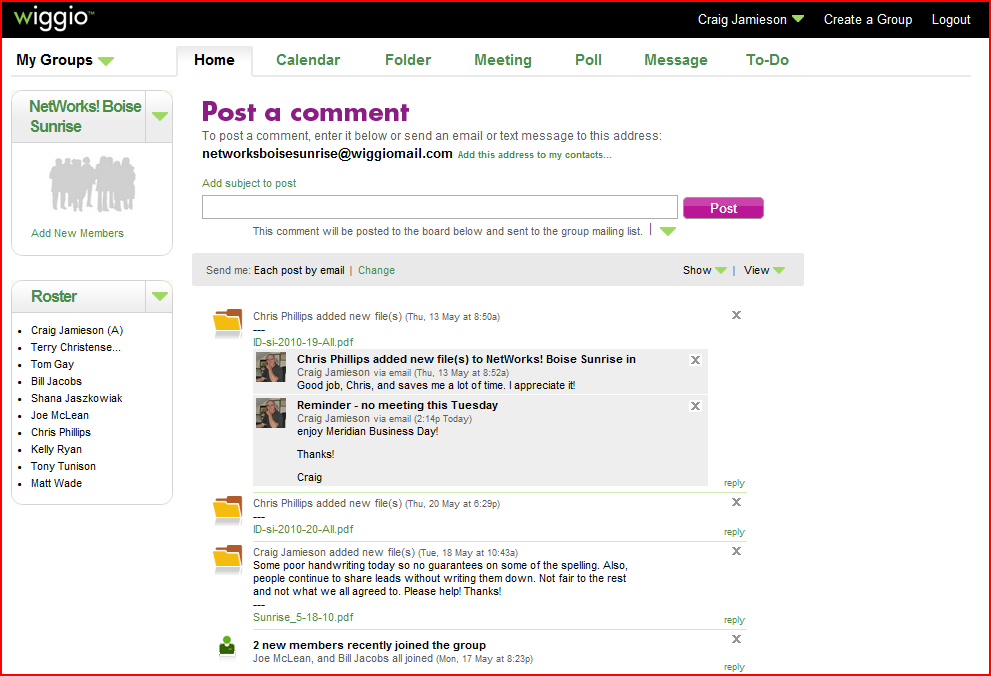Many classes are making the move to blended learning, a teaching philosophy that encompasses aspects of both online learning, and traditional in-class based lessons and lectures. To make the move to a blended learning environment, an educator needs the right tools and applications to facilitate this transition. Three tools that I will be reviewing include Edu 2.0, Wiggio, and Padlet.
_lmsauth_824270312822baafd5dac13edd327bf653df6e99.png)
Edu 2.0 is a free course management system for classrooms and schools to use for an online educational experience. It contains a user interface that is easy to navigate, and can be accessed by computer and smart devices alike. Edu 2.0 has lots of features, including social networking capabilities, curriculum development, a gradebook, and online quizzes to build, create, and administer. It is cloud hosted, so there is no need to save information on a personal device, and includes third party software integration.
The drawbacks to Edu 2.0 include a loss of extended features after the initial 30 day use is up. To retain the extended features, a user needs to pay to upgrade to the premium addition. Also, Edu 2.0 is limited only to school use, leaving tutors and tutoring companies unable to utilize this system. Lastly, while the user interface is relatively easy to use, it is still not designed for primary grade level use.

Wiggio is a collaborative toolkit application designed to allow users to share information and documents among groups and group members. It is easy to use and easy to share and manage files when working in collaborative situations. A user can set up a group calendar, post links, conduct conference calls, and send mass text messages to other users. Educators can use Wiggio to create a class group that contains contact information for student families. This allows the teacher to share documents, resources, and videos with families, and keep parents in the know, about what is going on in the class room.
The drawbacks of Wiggio include slow load times, and limited feature use. It does not have the same amount of features when compared to other collaborative tool apps, nor does it have the same knowledge base compared to others.

Padlet is a fun application that in essence is a virtual bulletin board. A user can use this program to create a bulletin board to post sticky notes, ideas, and questions for students to ponder and respond to. Users also have the ability to post images, links, videos, and more. Padlet is easy to use and can be accessed on both a computer and a smart device.
The drawbacks of Padlet focus mainly on the size of the posts. A user can only post a message with no more than 160 characters, so longer in-depth responses are not possible. Furthermore, each post does not reflect the source, meaning all posts are anonomyse. Students will have to sign or initial each post to receive the proper credit.
To access each Blended learning app, you can click on the links below.
https://www.edu20.org/
http://wiggio.com/
http://padlet.com/
Tim,
ReplyDeleteI've not used Wiggio before. Sounds fantastic! Thanks for sharing. Your post speaks well to the fact that there are so many tools - all with pros and cons to each. It is why I am such an advocate for variety. I wonder, do find that in your district/school you are given the trust and freedom to use the tools that best suit you and your students?
Tim, I have never heard of Wiggio or Padlet. They both seem to have their pros and cons. I think I will have to investigate them further in order to see how I could maybe implement them in my classroom. I would have to compare them to the tools that I am currently using. If I was to use Padlet, I would definitely have to ensure that my students had a good sense of Digital Citizenship and ensure they were very responsible about identifying who they were in their anonymous posts. Thanks for sharing!
ReplyDeleteTim, I've actually never heard of any of these tools. I think that Edu 2.0 could be a very effective tool for the classroom, but the 30 day limit is definitely a shame, and that is a drawback we see far too often. It is great that the tools that you provided, for the most part, are not tablet or computer specific, as that could potentially exclude various students. Thanks for the post!
ReplyDelete